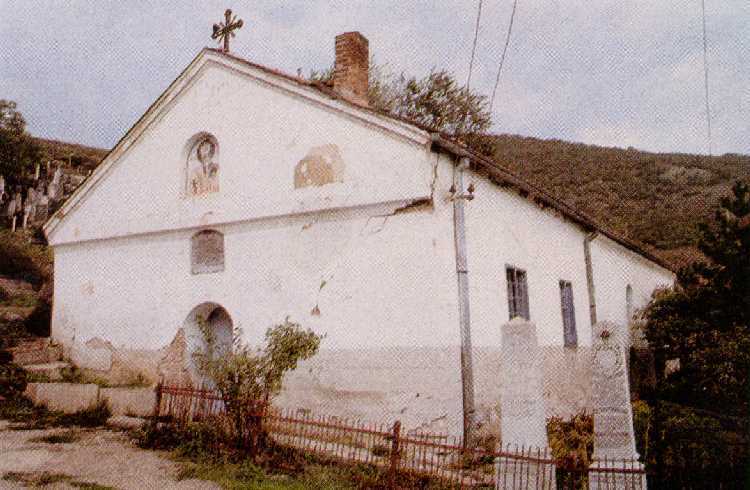
The Church of St. Nicholas is located on the edge of the village, below the graveyard, to the left from the road leading to the Monastery of St. George. There are some speculations that it was built on the fundaments of an older building. The now existing church was built in 1831, dedicated by the Niš bishop Grigorije in 1842 and frescoed in 1859. It was restored in 1933, when a nondescript parvis was added.

THE CHURCH OF ST. NICHOLAS IN KAMENICA
It belongs to the group of medium-size rural churches with a simple rectangular base and a semi-cylindrically vaulted apse in the eastern part. A nondescript parvis was later appended to its western side. It is vaulted by a semi-cylindrical vault, which is strengthened with three transversal arches leaned on the massive walls and wooden transversal beams and reinforced by iron tie anchors. There are three well-worked steps leading to the church from the west and one step of the same kind from the south. The floor, which is dug in the ground to match this height, is paved with expertly arranged and processed stone slabs, now visible only in front of the sanctuary partition. The pulpit rosette, hidden by a wooden floor, is made of an early-Christian tombstone with the Christ's Monogram, which was taken from the nearby Monastery of St. George. The holy dining table is made of an antique column with a stylobate. The northern wall and the southern wall near the iconostasis contain shallow niches by which the choirs are marked. The entrance door is arched and above it there is a niche whose archivolt is fringed by a shallow striped molding. The window openings on the south and east sides are constructed in the shape of loop-holes and simple biforiums and triforiums. The building was executed by ashlar bound by lime mortar with fine-ground brick rubble. Roman-Byzantine bricks may be observed near the church, implying the existence of an older structure.

The Church of St. Nicholas, interior
The walls are covered with fresco decoration performed in the lean mortar, which has tarnished to a great extent. Thick layers of soot have also covered the icons in the iconostasis, and their cleaning would bring all their beauty to the eye of a beholder. They were painted in 1860 by an anonymous painter.
The construction of the Church of St. Nicolas bears the spirit of traditional national building trade with the motives taken from the Old-Serbian ecclesiastical architecture that existed in the period of restoration, just before the liberation from the Turks.